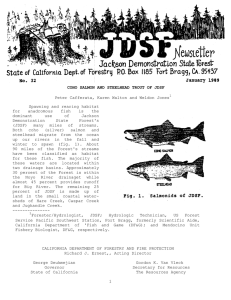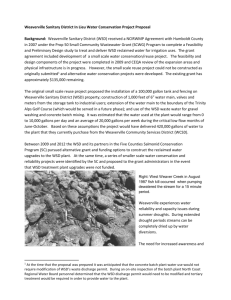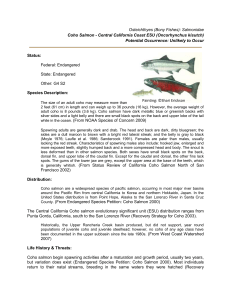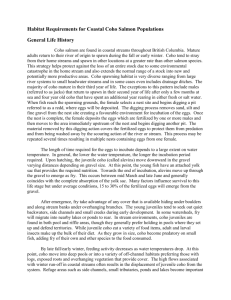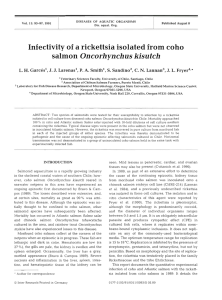Coho conservation measures
advertisement
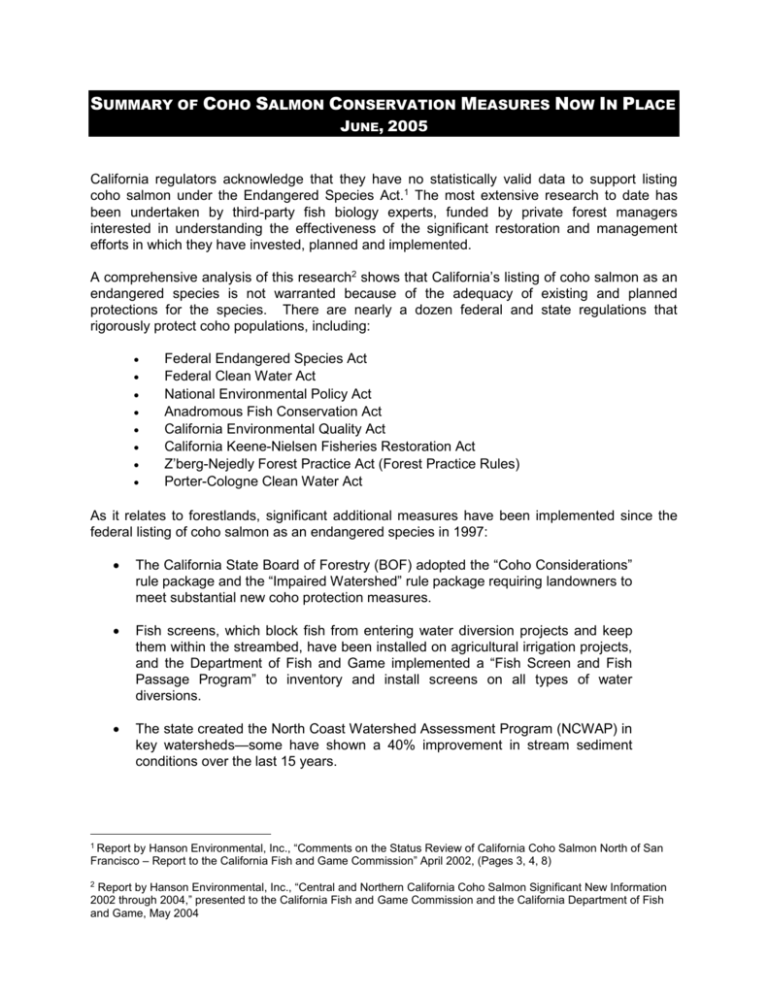
SUMMARY OF COHO SALMON CONSERVATION MEASURES NOW IN PLACE JUNE, 2005 California regulators acknowledge that they have no statistically valid data to support listing coho salmon under the Endangered Species Act.1 The most extensive research to date has been undertaken by third-party fish biology experts, funded by private forest managers interested in understanding the effectiveness of the significant restoration and management efforts in which they have invested, planned and implemented. A comprehensive analysis of this research2 shows that California’s listing of coho salmon as an endangered species is not warranted because of the adequacy of existing and planned protections for the species. There are nearly a dozen federal and state regulations that rigorously protect coho populations, including: Federal Endangered Species Act Federal Clean Water Act National Environmental Policy Act Anadromous Fish Conservation Act California Environmental Quality Act California Keene-Nielsen Fisheries Restoration Act Z’berg-Nejedly Forest Practice Act (Forest Practice Rules) Porter-Cologne Clean Water Act As it relates to forestlands, significant additional measures have been implemented since the federal listing of coho salmon as an endangered species in 1997: The California State Board of Forestry (BOF) adopted the “Coho Considerations” rule package and the “Impaired Watershed” rule package requiring landowners to meet substantial new coho protection measures. Fish screens, which block fish from entering water diversion projects and keep them within the streambed, have been installed on agricultural irrigation projects, and the Department of Fish and Game implemented a “Fish Screen and Fish Passage Program” to inventory and install screens on all types of water diversions. The state created the North Coast Watershed Assessment Program (NCWAP) in key watersheds—some have shown a 40% improvement in stream sediment conditions over the last 15 years. by Hanson Environmental, Inc., “Comments on the Status Review of California Coho Salmon North of San Francisco – Report to the California Fish and Game Commission” April 2002, (Pages 3, 4, 8) 1 Report Report by Hanson Environmental, Inc., “Central and Northern California Coho Salmon Significant New Information 2002 through 2004,” presented to the California Fish and Game Commission and the California Department of Fish and Game, May 2004 2 SUMMARY OF COHO SALMON CONSERVATION MEASURES NOW IN PLACE [PAGE 2] The California Department of Forestry instituted the “Hillslope Monitoring Program”—a statically-valid sample of timber harvest plans documenting protection measures as being highly effective in significantly reducing soil erosion. Long-term watershed research in the Jackson State Forest demonstrated 98% reduction in erosion from watersheds utilizing modern forestry technology. Four major north coast landowners are developing Habitat Conservation Plans (HCPs) for coho and other listed species under the federal ESA that will provide additional protection for nearly a million acres of coho watersheds. Private landowners have invested nearly $100 million in voluntary recovery and restoration activities. The state adopted an 800-page “Recovery Strategy” for all major coho watersheds, committing the state to an unfunded $5 billion in restoration projects over the next 25 years. In the Scott River Watershed, the Siskiyou Resource Conservation District and the Scott River Watershed Council have implemented 116 coho restoration projects on private lands since 1992, with a value of over $6.5 million dollars. Similar public/private partnerships have been working within the Trinity River, Eel and Van Duzen rivers in Humboldt County, and Shasta River Basin since 1992, demonstrating a long-term local commitment to monitor and remediate any coho habitat impacts within the north coast watersheds. PAGE TWO


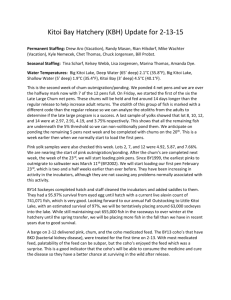
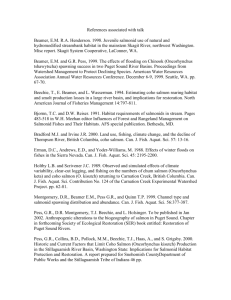
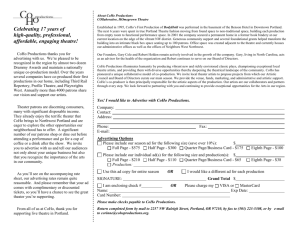
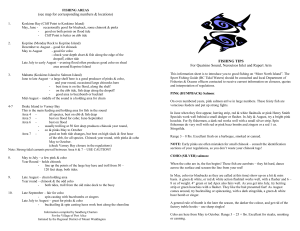
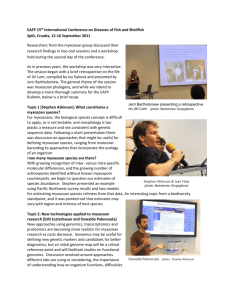
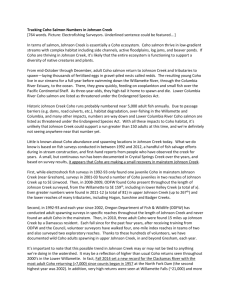
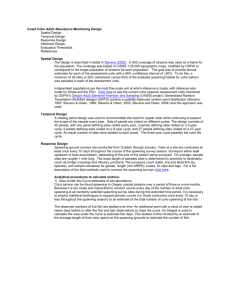
![This article was downloaded by: [Oregon State University]](http://s2.studylib.net/store/data/010881328_1-fd1202eb7467e847f509e667209cea3a-300x300.png)

